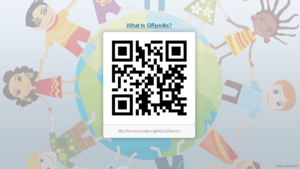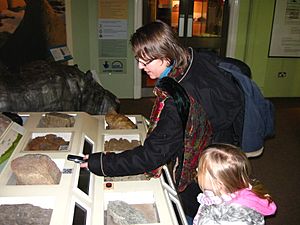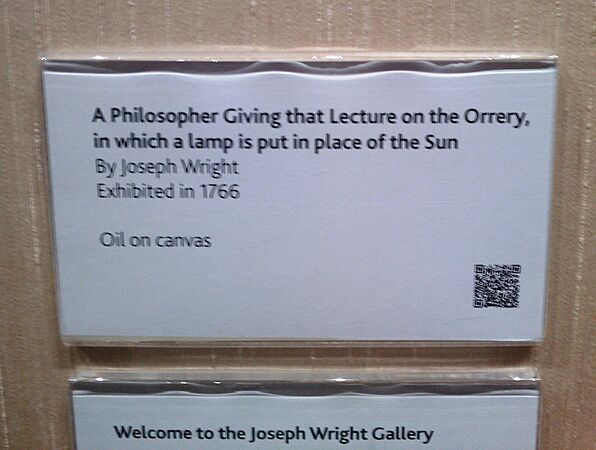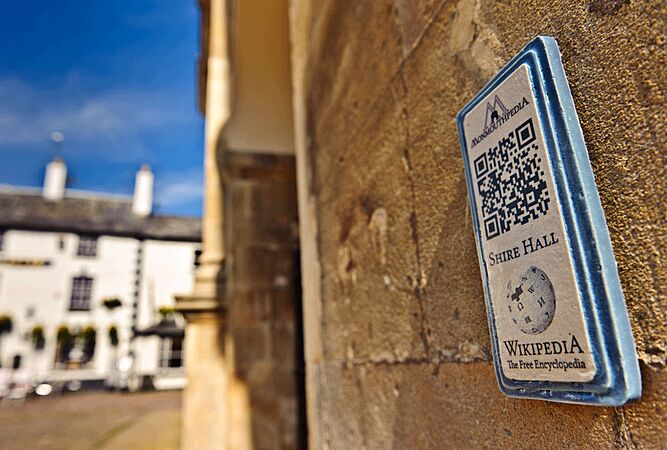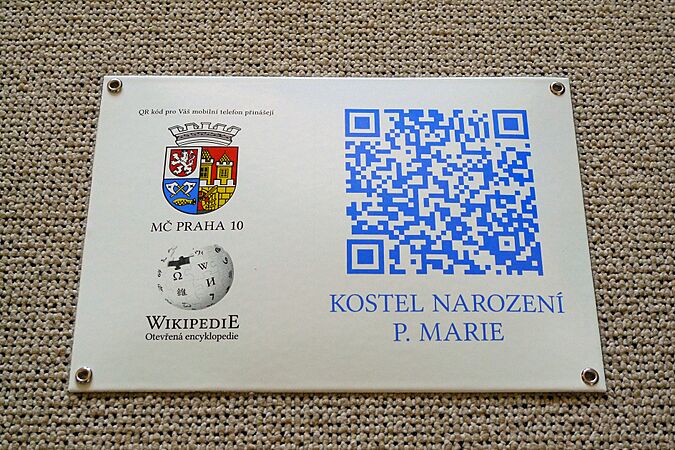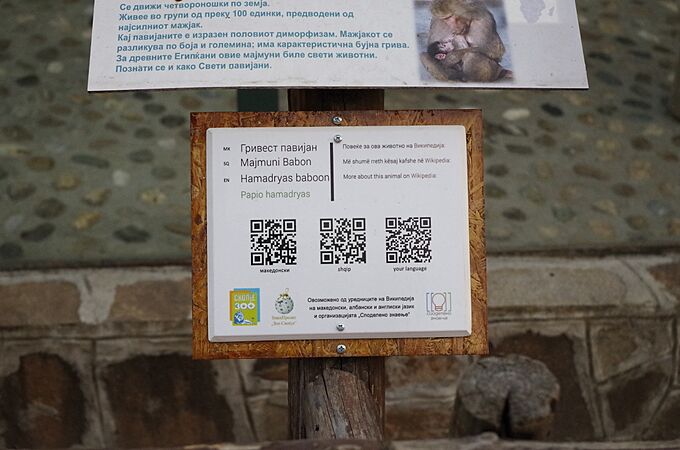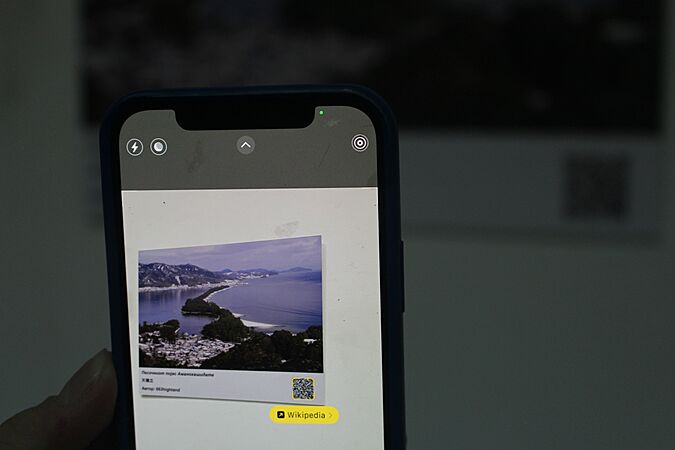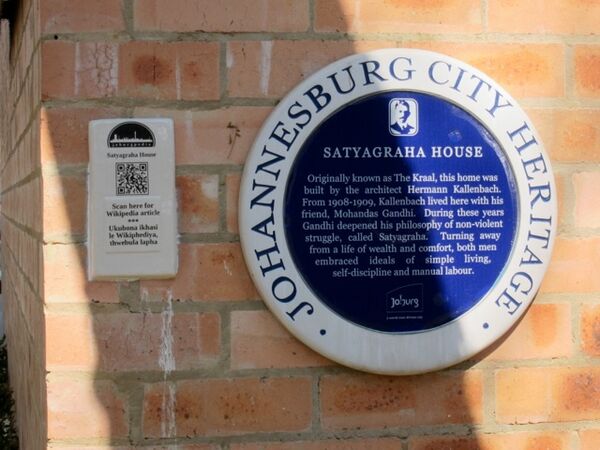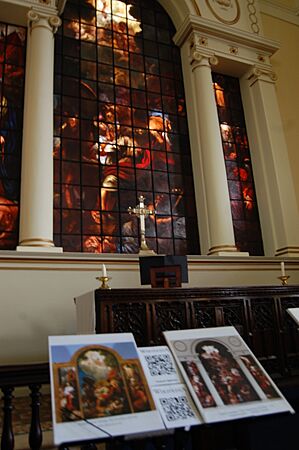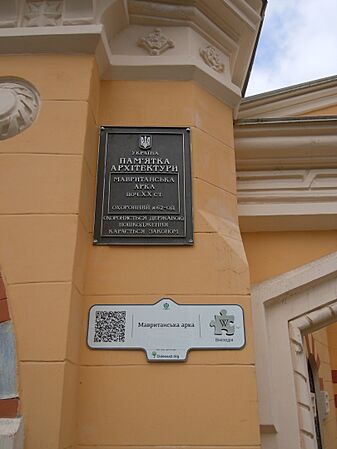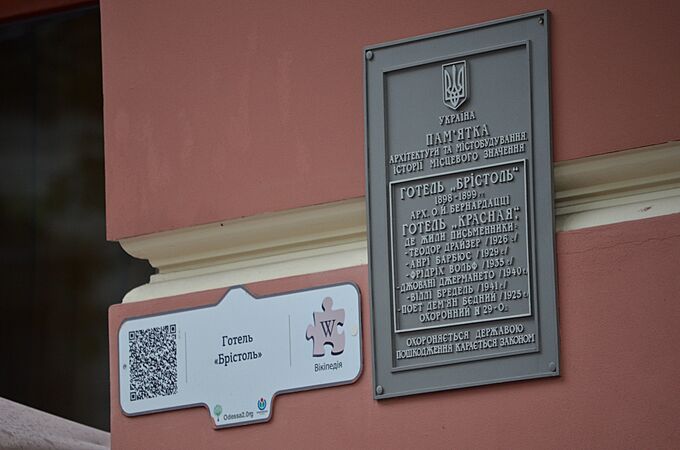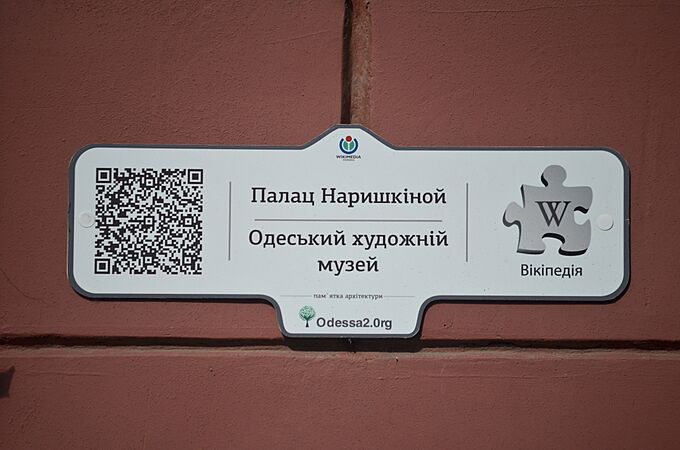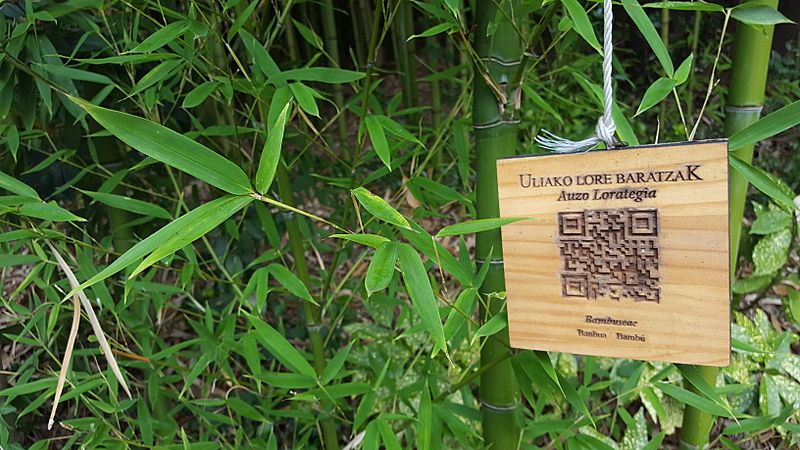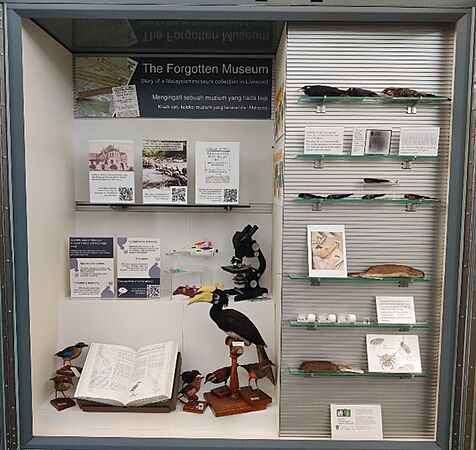QRpedia facts for kids

A QRpedia code which resolves as the URL http://en.qrwp.org/QRpedia, used widely as the logo
|
|
| Available in | Multilingual |
|---|---|
| Created by |
|
| Commercial | No |
| Registration | None |
| Launched | 9 April 2011 |
| Current status | Online |
|
Content licence
|
MIT Licence |
QRpedia is a cool system that uses special codes called QR codes to show you Wikipedia articles on your phone or tablet. It makes sure you see the article in your favorite language! Imagine visiting a museum and scanning a code next to an exhibit. QRpedia then shows you the Wikipedia page about that exhibit, right on your device.
This system was created by Roger Bamkin, who volunteers for Wikipedia, and coded by Terence Eden. It was first shown in April 2011. Many museums and other places around the world use QRpedia. You can find it in countries like Australia, India, the United Kingdom, and the United States. The way QRpedia works is open for anyone to use or change, thanks to its MIT License.
Contents
How QRpedia Works
When you scan a QRpedia code with your mobile device, your device reads the code. This code contains a special web address. This address tells your device to go to the QRpedia website.
Your device also tells the QRpedia website what language you prefer. The QRpedia website then looks for the Wikipedia article you want. It tries to find it in your chosen language.
If the article is available in your language, QRpedia shows it to you. It makes sure the article looks good on your phone or tablet. If the article isn't in your language, QRpedia offers other languages. It can even use Google Translate to help.
This means one QR code can give information in many languages. Museums can share details with visitors from all over the world. They don't need to translate everything themselves. QRpedia also keeps track of how many people scan the codes.
The Start of QRpedia
QRpedia was thought up by Roger Bamkin, a Wikipedia volunteer. Terence Eden, who works with mobile websites, helped create it. It was first shown on April 9, 2011. This happened at the Derby Museum and Art Gallery in England.
This event was part of a project called "GLAM/Derby." GLAM stands for Galleries, Libraries, Archives, and Museums. During this project, over 1,200 Wikipedia articles were created. These articles were in many different languages.
The name "QRpedia" is a mix of two words. "QR" comes from "QR (Quick Response) code." "Pedia" comes from "Wikipedia." The code for QRpedia is free for anyone to use. It is shared under the MIT License.
Where QRpedia is Used
QRpedia was created in the United Kingdom. But it can be used anywhere you have a phone signal. It is used in many places, including:
-
Derby Museum's label for the painting "A Philosopher Lecturing on the Orrery" features a QRpedia code. This code links to its Wikipedia article.
-
A label at The Children's Museum of Indianapolis uses QRpedia. It sends visitors to the Wikipedia article about the "Broad Ripple Park Carousel".
-
A ceramic plaque with a QRpedia code for Shire Hall, Monmouth. This is part of the MonmouthpediA project.
-
A QRpedia plaque at Skopje Zoo. It gives information on a hamadryas baboon.
-
A QRpedia code before the East window of St Paul's Church, Birmingham.
-
The Forgotten Museum Display about the Selangor Museum collection at World Museum, Liverpool.
- Children's Chapel, St James' Church, Sydney
- The Children's Museum of Indianapolis, United States
- Congressional Cemetery
- Derby Museum and Art Gallery, England
- Estonian Sports Museum
- Galleries of Justice Museum
- Fundació Joan Miró, Spain
- The Welsh town of Monmouth, as part of Wikipedia's MonmouthpediA project.
- The National Archives, United Kingdom
- The National Museum of Computing (UK)
- The New Art Gallery Walsall
- Different monuments in Prague 10
- Skopje Zoo, Macedonia
- St Paul's Church, Birmingham
- QRpedia codes in Odesa, Ukraine
QRpedia is also used outside of museums. For example, the Occupy movement has used it on their posters.
An Award for QRpedia
In January 2012, QRpedia won an award. It was named one of the most innovative mobile companies in the UK for 2011. This was part of the Smart UK Project. QRpedia was chosen from 79 projects. It then competed at the Mobile World Congress in Barcelona. The judges looked for projects that were effective and easy to understand. They also wanted projects with global potential.
Ownership of QRpedia
There was a discussion about who owned QRpedia. This led to a review of how Wikimedia UK (WMUK) was managed in 2012. The review found that it took too long to decide on ownership. This could make people outside the organization think there was a problem.
In 2013, WMUK announced that QRpedia would be transferred to them. Roger Bamkin and Terence Eden agreed to transfer ownership. The intellectual property rights for QRpedia are now held by Cultural Outreach Limited. This company is a part of WMUK. This transfer helps protect WMUK.
See also
 In Spanish: QRpedia para niños
In Spanish: QRpedia para niños
- Amarapedia
- Monmouthpedia
- Gibraltarpedia
- Freopedia
- Toodyaypedia


